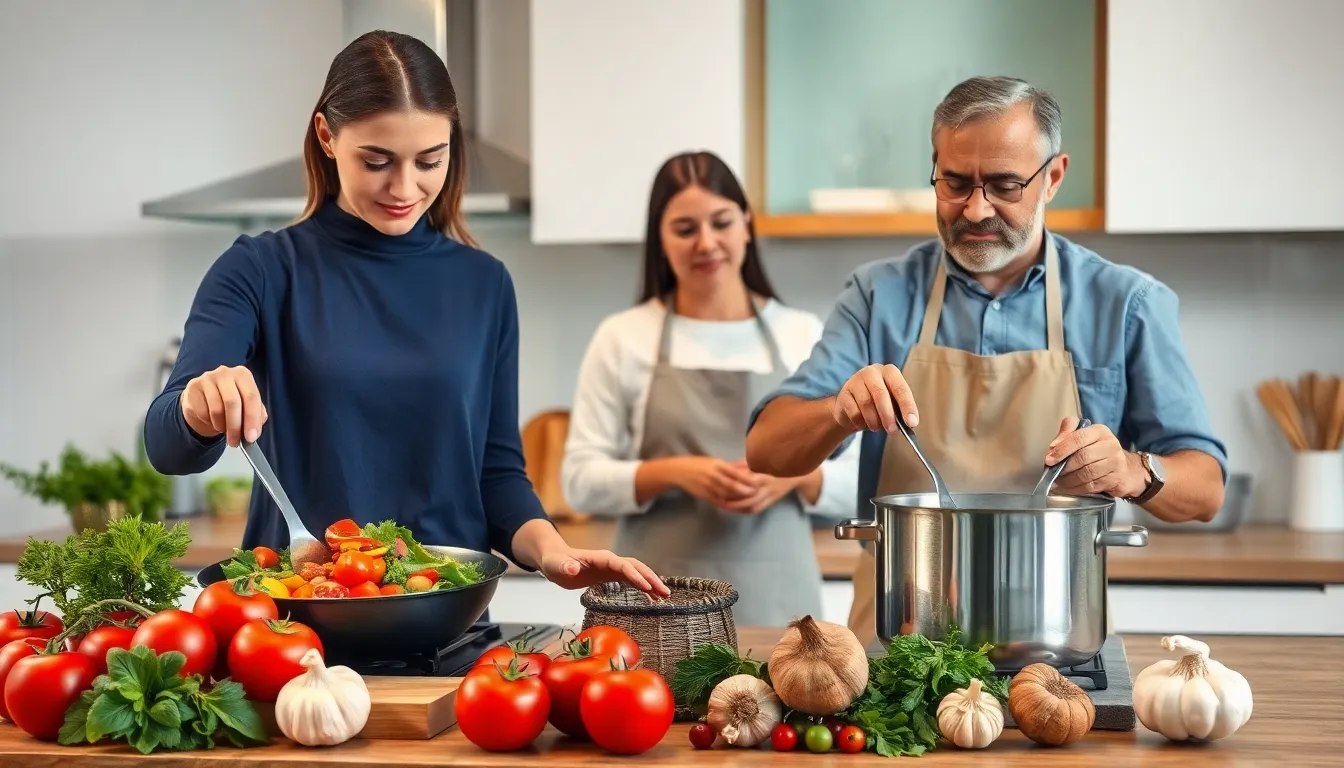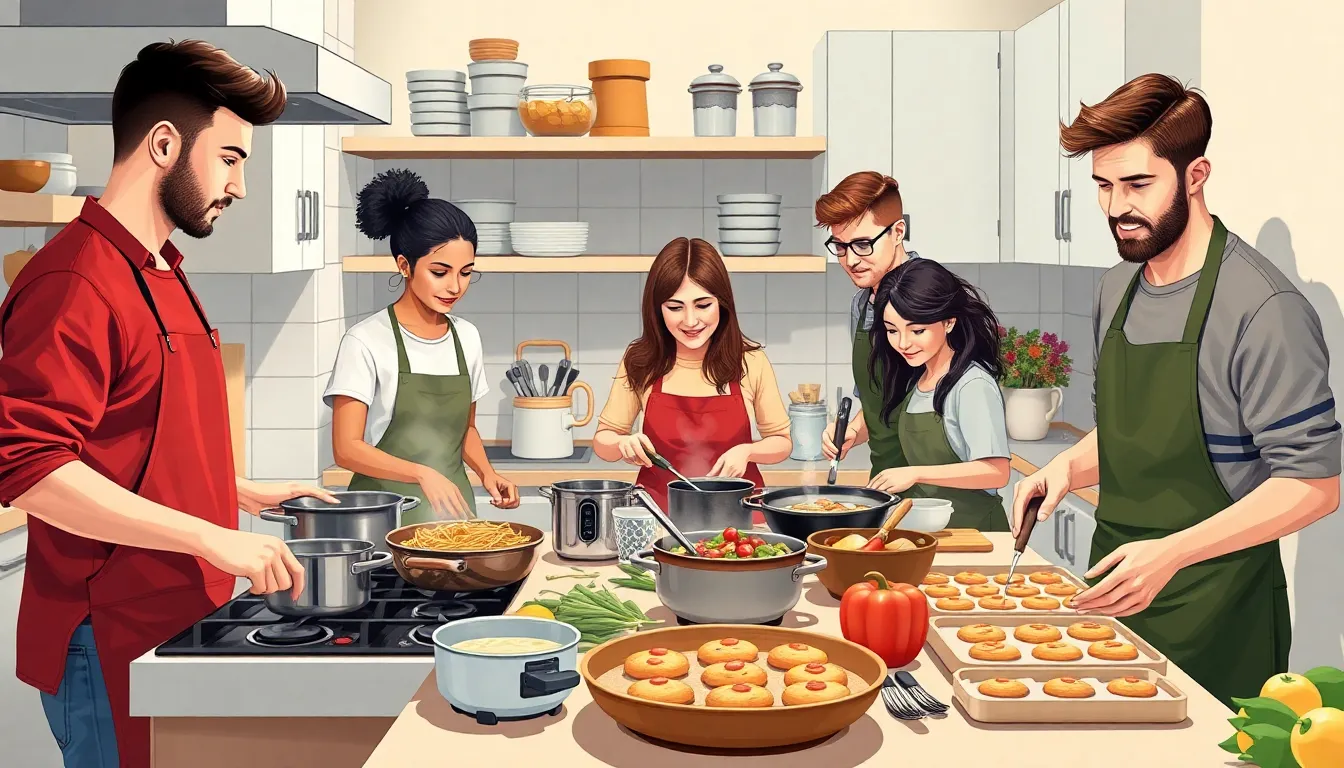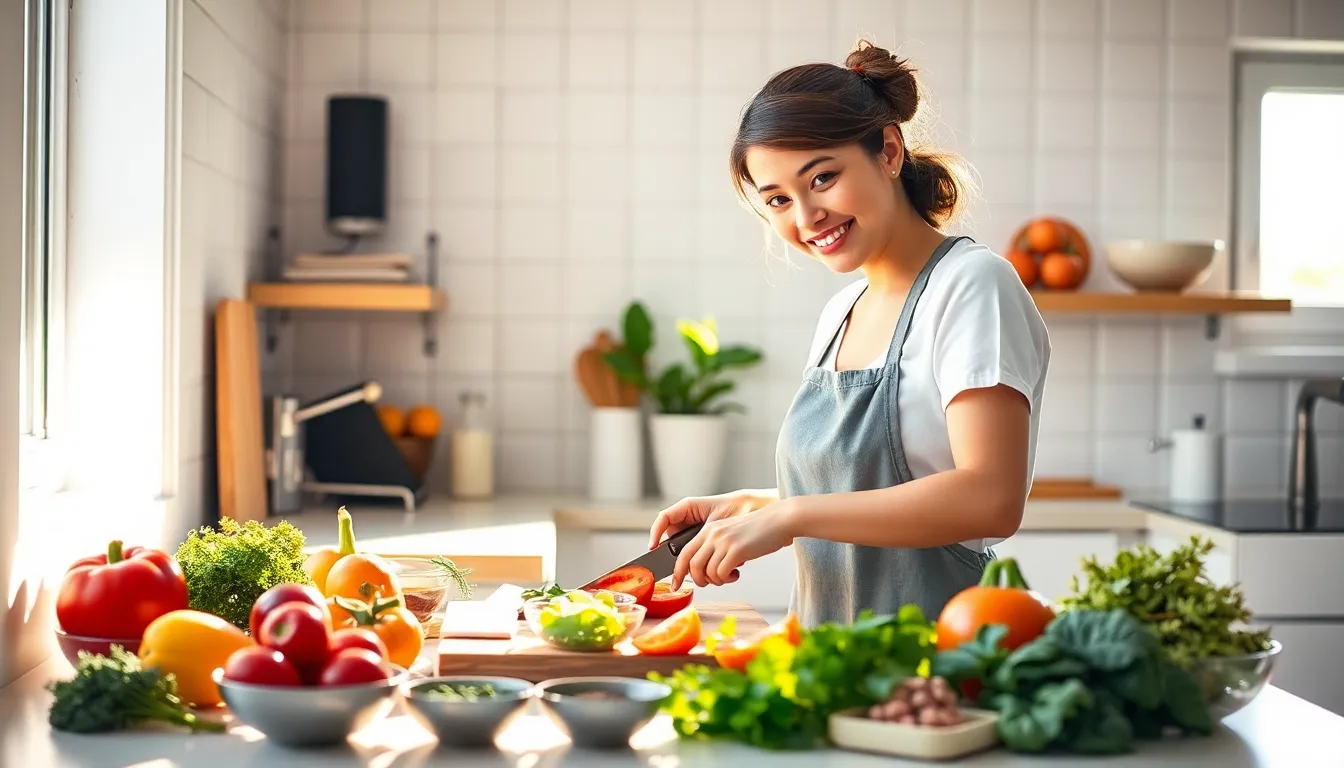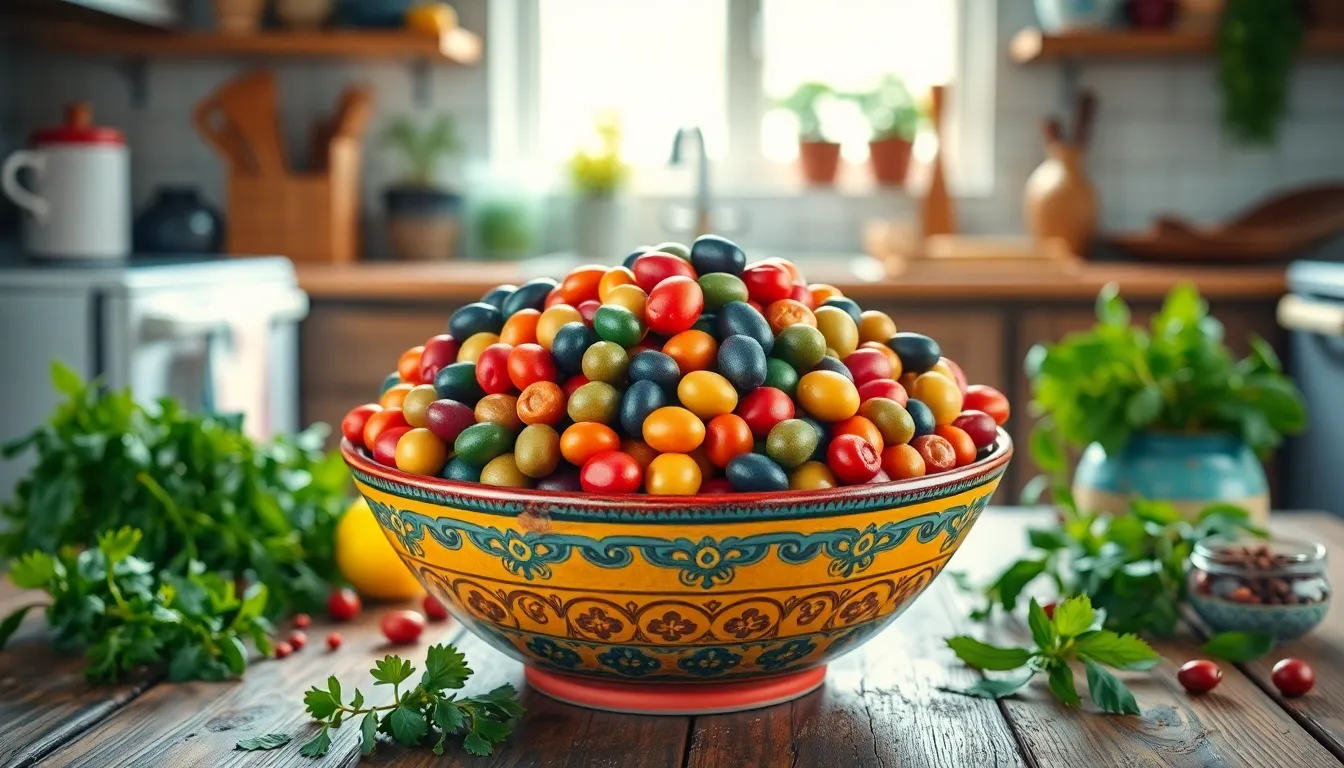Cooking can feel like a daunting task, especially for beginners who might think a soufflé is just a fancy way to say “oops.” But fear not! Mastering the kitchen doesn’t require a culinary degree or a secret handshake with Gordon Ramsay. With the right techniques, anyone can whip up delicious meals that’ll impress friends and family—or at least make them stop ordering takeout.
Table of Contents
ToggleUnderstanding Cooking Techniques
Cooking techniques form the foundation of any successful cooking journey. By grasping these methods, beginners can tackle a range of dishes with confidence.
Basic Cooking Terms
Understanding basic cooking terms simplifies the learning process. Terms like sauté, simmer, and blanch describe specific methods. Sautéing involves cooking food quickly in a small amount of oil. Simmering entails cooking food gently in liquid just below boiling. Blanching refers to briefly boiling food before plunging it into ice water. Knowing these terms helps beginners follow recipes accurately and communicate effectively in the kitchen.
Importance of Mastering Techniques
Mastering basic cooking techniques boosts confidence and creativity. Gaining proficiency in techniques allows beginners to experiment with flavors and textures. With solid skills, they can modify recipes to suit personal tastes. Developing these techniques fosters independence, reducing reliance on pre-packaged meals or takeout. As experience builds, beginners become more adventurous, exploring new cuisines and challenging themselves with complex dishes.
Common Cooking Techniques


Understanding essential cooking techniques breaks down barriers for beginners. Techniques like boiling, sautéing, and baking form the foundation of successful meal preparation.
Boiling and Simmering
Boiling involves cooking food in water at a high temperature, reaching 212°F (100°C). Foods such as pasta and potatoes benefit from boiling, resulting in tender textures. Simmering, on the other hand, keeps water temperature around 185°F (85°C) and allows for flavors to meld. Soups and sauces often use simmering for optimal taste. Both methods are straightforward and offer a great starting point for beginners.
Sautéing and Stir-Frying
Sautéing requires cooking food quickly in a small amount of oil over medium to high heat. Vegetables and proteins develop rich flavors in just a few minutes. Stir-frying combines high heat with constant movement, allowing ingredients to cook evenly. Commonly used in Asian cuisine, stir-frying encourages vibrant colors and textures. Both techniques promote healthy cooking and enhance flavor profiles.
Baking and Roasting
Baking entails cooking food through dry heat in an oven, with temperatures ranging from 300°F to 400°F. Baked goods like bread or cookies require precise measurements and techniques. Roasting, often done at higher temperatures, yields crispy exteriors while keeping the inside moist. Vegetables and meats respond wonderfully to roasting. Mastering these two techniques expands a beginner’s versatility in the kitchen.
Essential Cooking Tools for Beginners
Having the right tools makes cooking enjoyable and efficient. Beginners benefit from simple utensils and quality cookware.
Kitchen Utensils
Essential kitchen utensils include a cutting board, measuring cups, and spatulas. A sharp chef’s knife allows precise cutting, crucial for preparing ingredients confidently. Mixing bowls help in combining elements, whether for salads or batter. Tongs provide a secure grip when flipping or serving food. Adding a whisk enhances mixing capabilities, especially for sauces and dressings.
Cookware Essentials
Basic cookware comprises pots, pans, and baking trays. A non-stick skillet offers convenience for cooking eggs and pancakes without sticking. A sturdy saucepan serves well for boiling and simmering various dishes. For roasting, a baking sheet or dish is vital, allowing flavors to develop beautifully. Investing in versatile cookware supports diverse cooking techniques and encourages culinary exploration.
Tips for Practicing Cooking Techniques
Practicing cooking techniques gives beginners confidence in the kitchen. Consistent practice leads to better skills and mastery of flavors.
Start Simple
Begin with easy recipes that use basic techniques. Preparing scrambled eggs or a vegetable stir-fry allows beginners to focus on mastering essential skills. Start by measuring ingredients accurately. Use a sharp chef’s knife to chop vegetables efficiently. Cooking simple dishes builds confidence and familiarity with cooking processes. As they become comfortable, they can progress to slightly more complex recipes. Each success reinforces their ability and encourages them to try new things.
Follow Recipes
Following recipes provides structure for novice cooks. Recipes include specific ingredient lists and detailed steps, essential for achieving desired results. Reading through the entire recipe beforehand helps understand the process. It also sets clear expectations for preparation time and serving size. Beginners can also learn new techniques through following various recipes. Some might even offer tips about temperature control and ingredient substitutions. Mastering a few recipes builds a solid foundation for future culinary adventures.
Cooking can be an enjoyable and rewarding journey for beginners. Embracing basic techniques and familiarizing oneself with essential tools creates a strong foundation for culinary success. With practice and patience, anyone can transform simple ingredients into delightful meals.
As confidence grows in the kitchen, so does the willingness to experiment with new flavors and cuisines. This exploration not only enhances cooking skills but also fosters creativity and independence. By starting with straightforward recipes and gradually tackling more complex dishes, beginners can truly unlock their potential and discover the joy of cooking.




